The victims of a minefield laid by U-701
U-701 laid 15 TMB (bottom mines laid from the boat's torpedo tubes - 7.5 feet long, carried a 1,276 pound explosive charge) in the aproach to Chesapeake Bay on during the night of June 11/12, 1942. In the late afternoon of June 15 Convoy KN-109, proceeding from Key West to Hampton Roads reached the the minefield. At 1702 local time the tanker Robert C. Tuttle struck a mine followed 31 minutes later by the Esso Augusta. It was believed at that moment that the ships had been torpedoed. The escorting destroyer USS Bainbridge (DD 246), searching for a possible submarine, detonated a mine at 1827 but remained afloat. The anti-submarine trawler HMS Kingston Ceylonite (FY 214), escorting a tug and tow up the coast struck a mine at 1927 sank in two minutes with 18 dead and 14 survivors. After minesweeping operations had found and detonated 9 more mines the port was put back in operation. On the afternoon of 17 June Convoy KS-511 was forming up when the coal ship Santore struck a mine and sank. |
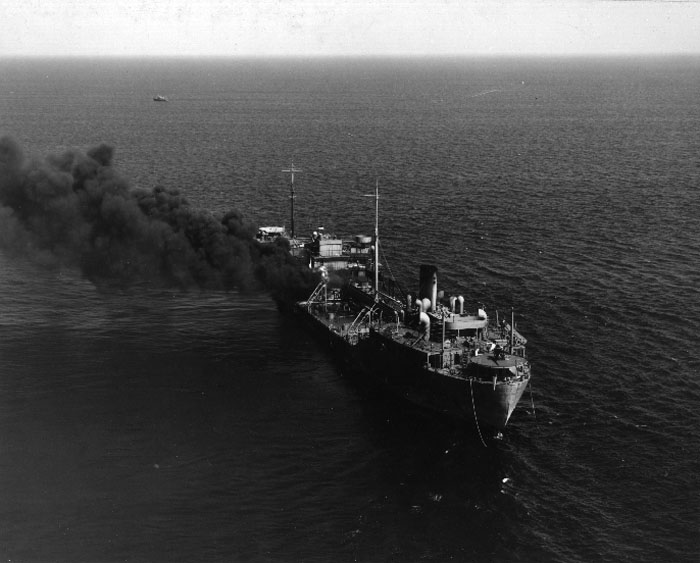
Photo #1 - The American tanker Robert C. Tuttle (11,615 tons) struck a mine on her starboard side forward and settled to the bottom in 54 feet of water. One dead 46 were rescued. |
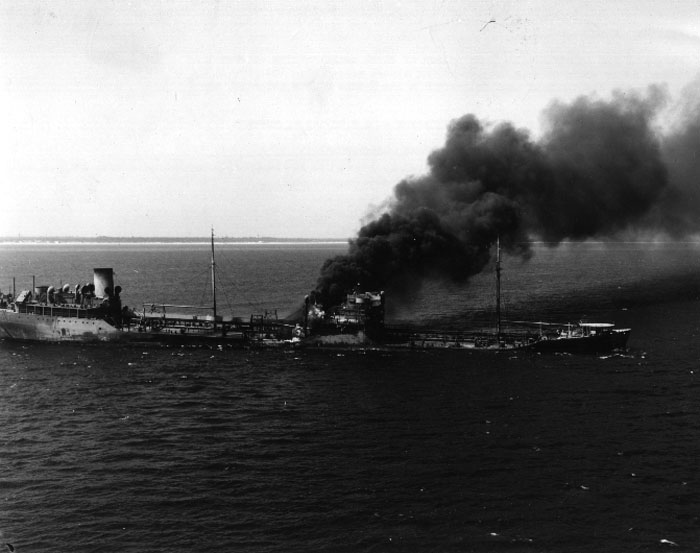
Photo #2 - Robert C. Tuttle |
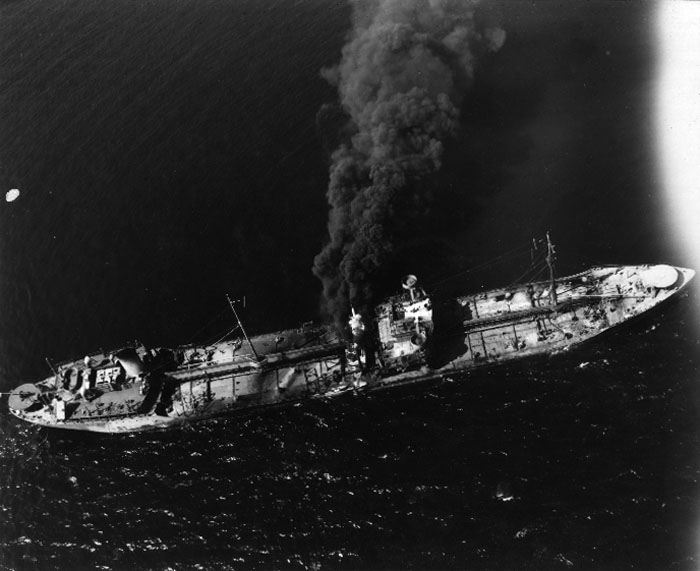
Photo #3 - Robert C. Tuttle |
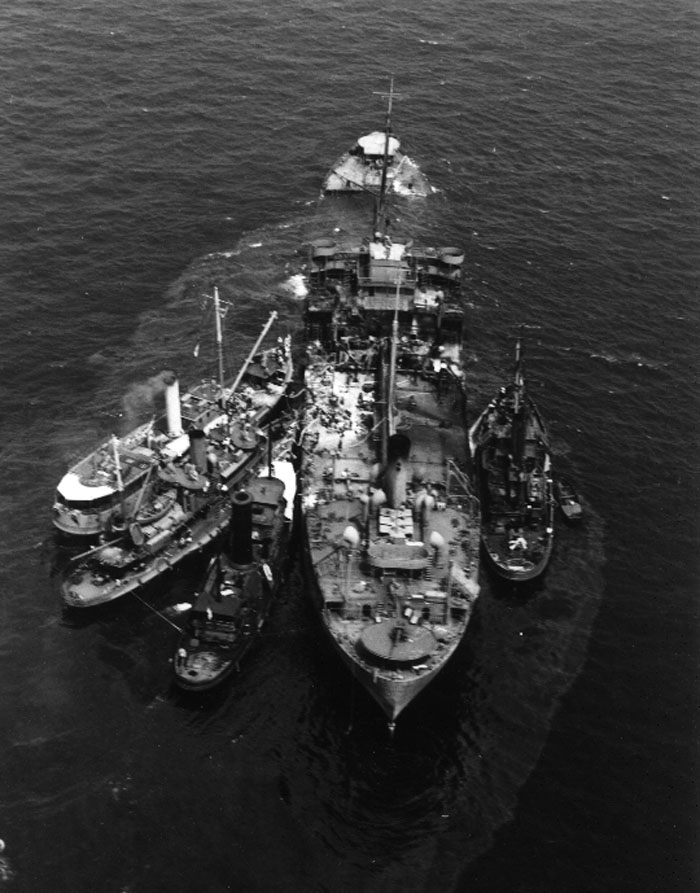
Photo #4 - Robert C. Tuttle was salvaged, repaired in Baltimore and returned to service |
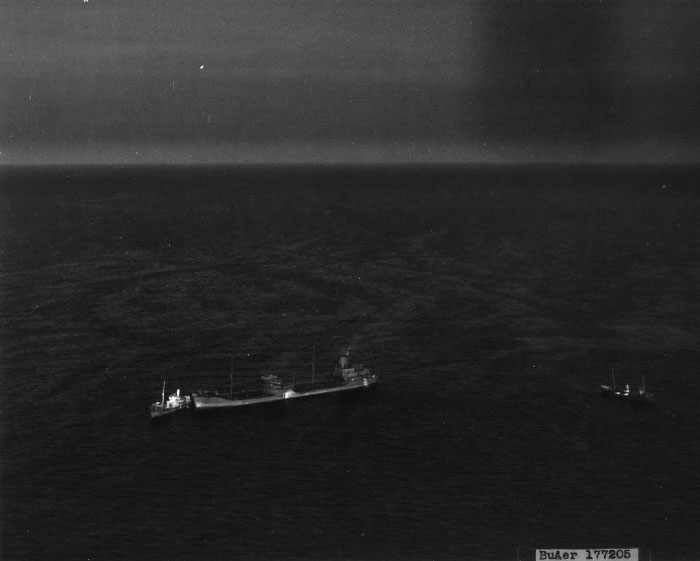
Photo #5 - American tanker Esso Augusta (11,237 tons) struck a mine on the port quarter disabling her steering and propulsion. She was towed into Norfolk the next day, repaired in Baltimore and returned to service. There were no casualties. |
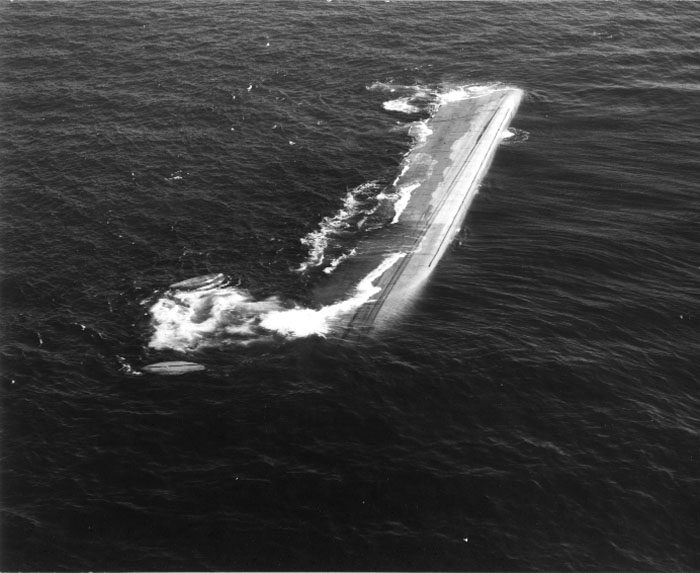
Photo #6 - The American coal ship Santore (7,117 tons) struck a mine on her port side and rapidly capsized and sank. There were three dead 43 survivors. |
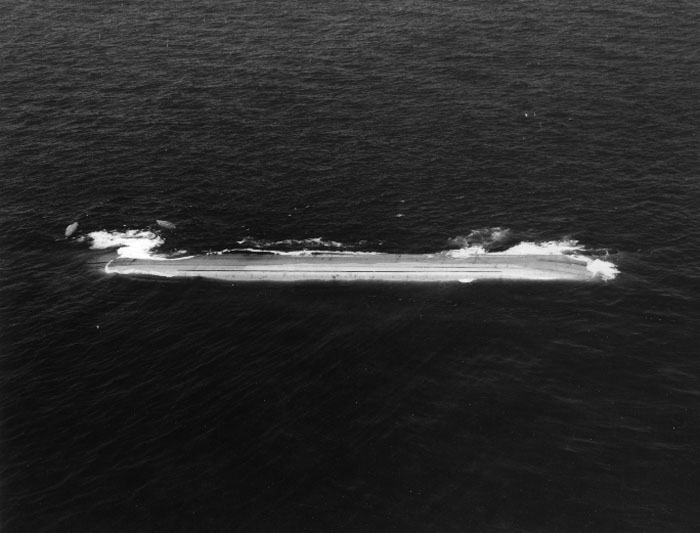
Photo #7 - Santore |
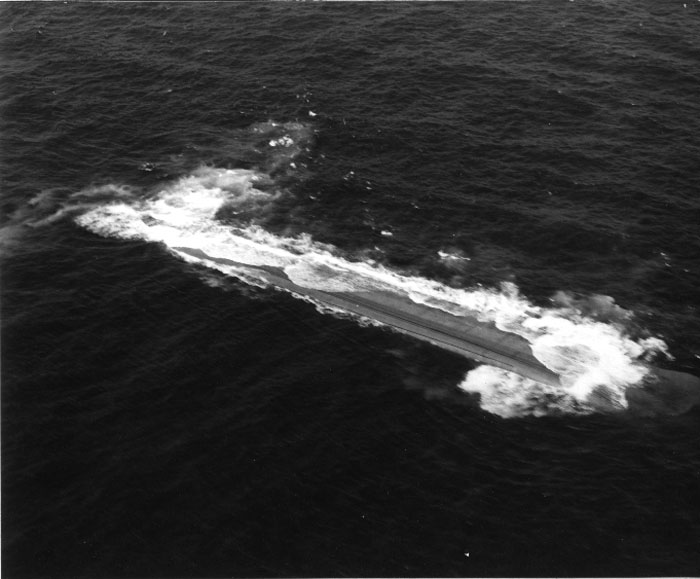
Photo #8 - The wreck of the Santore was salvaged in 1954 |